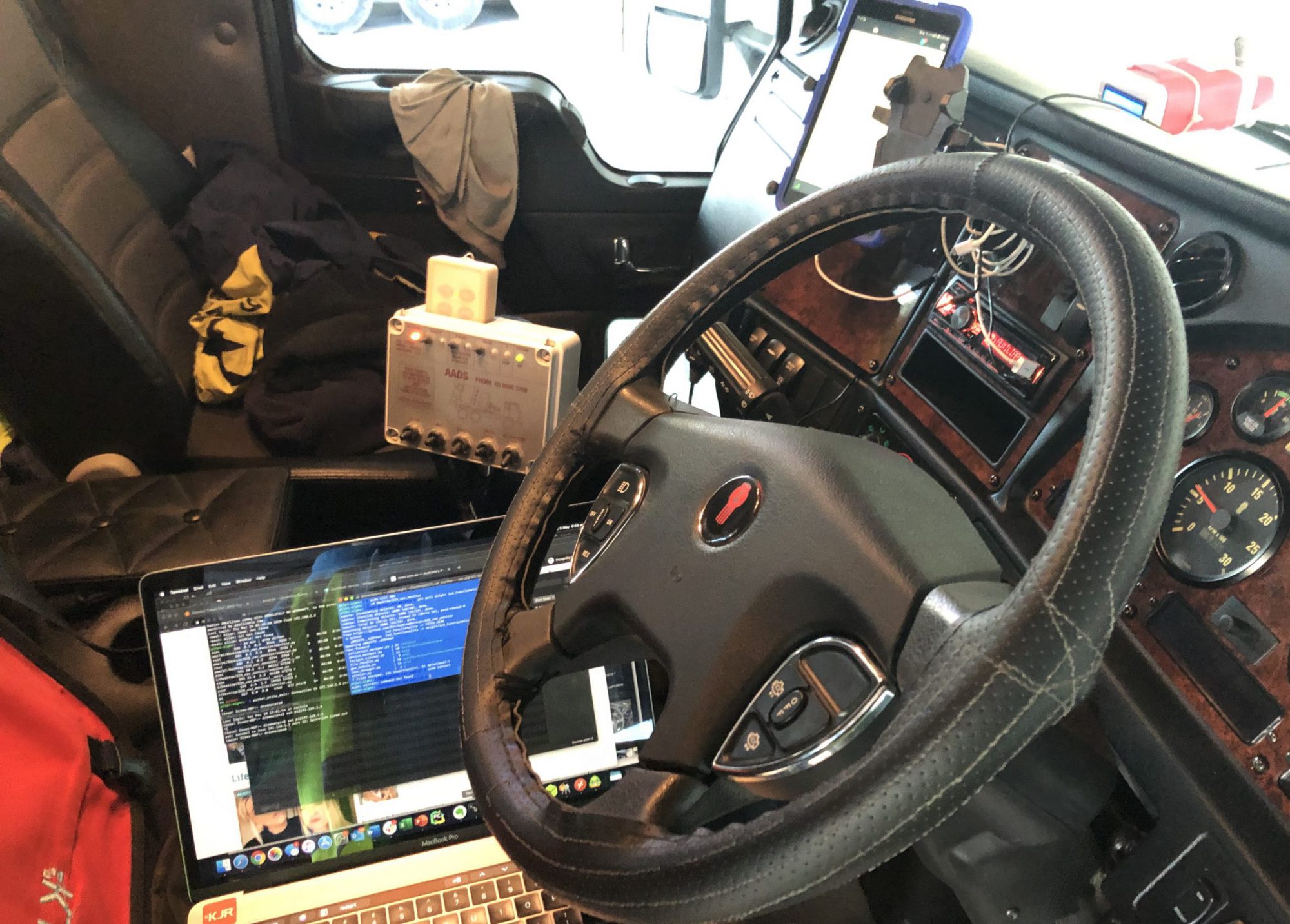Firstly, how do you say FatigueM8?
FatigueM8 is pronounced Fatigue-Mate!
The name comes from the notion that our solution is your mate in the cab, keeping an eye out for you and your physiological state; and just like your real mates wouldn’t (and shouldn’t) let you drive fatigued neither will FatigueM8.
FatigueM8 overview
FatigueM8 was born in the National’s Capital in 2018, winning the Australian Trucking Associations (ATA) FatigueHACK competition, in a tightly contested crowd vote. At the core of our solution is the ability to use the drivers own biometrics to monitor their fatigue levels, and once baselined the ability to predict fatigue levels across a 1 to 2 hour time horizon.
Our core thesis is that our drivers generally know their tried signs (sore shoulder, their knees start to ache) but all too often once they are fatigued the places to rest are limited for a 26 meter long B-Double. Our solution (in its end state) will be able to predict the drivers fatigue level over the 1 to 2 hour horizon, and then recommend a set of rest options that will help to proactively manage their fatigue. The diagram below show’s a demo of this concept, with a traffic light system for the levels of fatigue we’d predicted aligned with the corresponding rest stops along the way.

We are currently in a data collection phase, with three (3) FatigueM8 units installed into vehicles around the Canberra area. The vehicles have a varied freight task, one aggie (pictured below), a B-Double Tipper operating along the Hume Highway into Sydney and a light commercial van operating around Canberra.

Our current installations have been into Kenworth’s (T409SAR, T359A). The installation process is simple for Kenworth’s with a Smart Steering wheel and takes about an hour. We install the ECG unit under the horn cover, stitch on our custom steering wheel cover and plug our on-board compute unit into a spare USB port.

The on board compute unit sits on the vehicle dashboard and amongst other things captures the traffic and road conditions our drivers and vehicles are operating in.

Throughout our journey we’ve been focused on fatigue, but all the while knowing that by monitoring our drivers cardiac health, we’ll be able to assist them with their health in a holistic manner. From a trucking perspective, fatigue is a key issue now and will be into the future. Sadly In 2020 the National Transport Insurer (NTi)’s Major Accident Investigation Report, “Fatigue, unfortunately, remains the single largest cause of truck driver deaths. 34.8% of truck driver deaths in NTI losses were as a result of fatigue”. In 2020, 18 truck drivers lost their lives to fatigue related accidents and many more were seriously injured.
In terms of holistic health, The Heart Foundation reported that “Cardiovascular disease is the most costly disease group accounting for some $7.7 Billion dollars of direct health spending annually and is largely preventable. Disturbingly, some 1.4m Australians aged 45-74 have a high risk of a heart attack or stroke within the next five years. But almost one million of these are not receiving the recommended treatment” – with the average age of our drivers hovering around the 47.5 years old, combined with (generally) poor diet and limited ability to exercise means, that our cohort are squarely in the high risk category of developing cardiovascular disease. With a FatigueM8 unit fitted, drivers are regularly assessed using FDA approved ECG monitoring devices (every time they have two hands on the steering wheel) with the ability for the recordings to be reviewed by Cardiologists who are part of the FatigueM8 team.
We’re actively seeking companies and drivers to participate in the data collection phase and looking for a variety of driver tasks. If you interested finding out more or to participate in the trial please get in touch with us via the form below.

